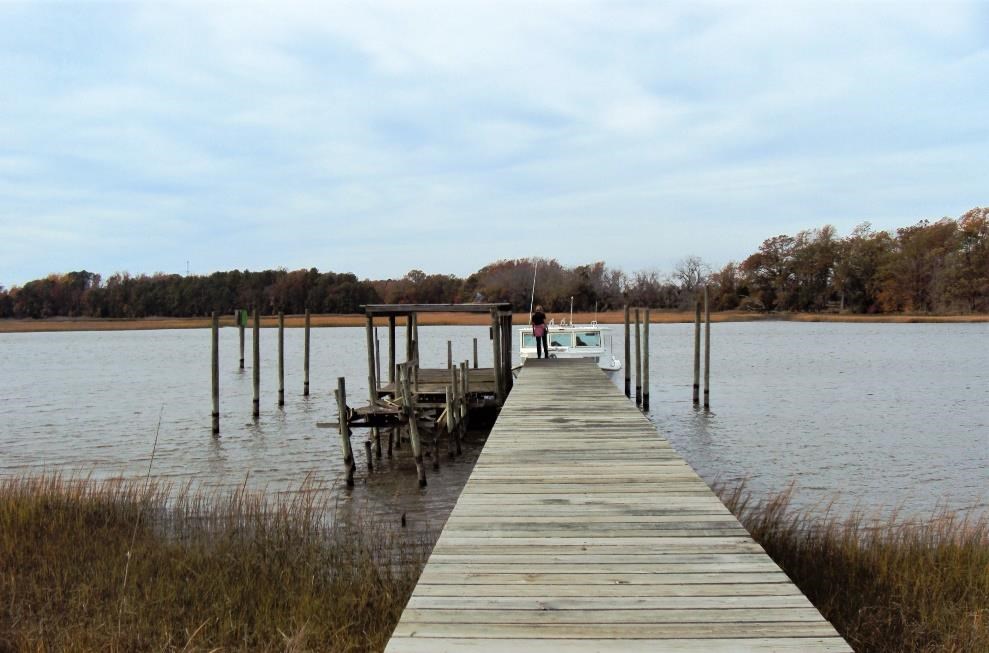Last updated: March 2, 2022
Article
Connecting a City to its River: A Tale of Triumph in Virginia

By Kendra Barat
A river serves many purposes. It can be a bustling ecosystem, home to diverse flora and fauna. It can offer peaceful refuge, adventurous recreation for people of all kind and much more.
The Nansemond River, a 19-mile James River tributary that bisects the city of Suffolk, Virginia, has much to offer its 90,000 residents. However, until 2012, the river lacked a crucial element that could elevate it into the public eye – recreation access.
“Very few people really...knew what [they] had or how they could access it,” said Karla Smith, chairwoman of the Suffolk River Heritage.
To enhance public access to this integral, natural and historical resource – Smith along with John Wass, the vice president of the Nansemond River Preservation Alliance, applied for community
assistance through the National Park Service – Rivers, Trails and Conservation Assistance program in 2012. For the next three years, National Park Service project specialist Ursula Lemanski worked closely with Smith and Wass.
To set out and create a network of water trails, “[we’re aiming] to make people in our region aware of our natural resources – the Nansemond River and Lake,” Smith said.
From the start, the primary goal of the Suffolk Water Trails project has been to increase public access to non-motorized river recreation opportunities in and around the city. This can include canoeing, kayaking or other non-motorized paddling. A secondary goal is to build awareness of the historical and environmental significance of the Nansemond River.
Lemanski noted that a community priority was to highlight their river heritage. “They wanted to make sure that the next generation understood the past and the history there,” she said.
Lemanski began her work by conducting an assessment of the river with leaders from the Nansemond River Preservation Alliance and other partner organizations. The information gathered in the assessment was used to create a concept plan that explored the history of the region.

“[The plan included] what we could do...in the near future and maybe down the road a ways too,” Wass said.
With the plans, they were able to identify and construct four public access sites with corresponding water trails in the Nansemond River at Lone Star Lakes, Constant’s Wharf, Sleepy Hole Park, and Bennett’s Creek. According to Smith, two of the recently installed access sites are ADA accessible. Lemanski also assisted with the development of a water trails map and guide that provides visual and written historical and ecological context, including everything from stories of the earliest Native American river travelers, to information about the various species of crabs found in the Nansemond.
In addition to creating a plan and an implementation strategy, Lemanski worked to bridge a substantial gap between the Nansemond River Preservation Alliance and local and national government agencies. Lemanski facilitated contact within the Suffolk Department of Parks and Recreation to better connect their efforts with the city and worked with her colleagues at the National Park Service to incorporate the Suffolk water trails into the larger Captain John Smith Chesapeake National Historical Trail, a water trail spanning nearly 3,000 miles across the Chesapeake Bay and its rivers.
"[The National Park Service] has helped us develop a comprehensive vision for the Suffolk Water Trails, providing advice and mentoring that has led us through many agency labyrinths,” Wass said.
Both Wass and Smith said they feel that the level of recreation on the river has increased in Suffolk because of their work to increase and enhance public access sites. For instance, before these sites existed – it was very difficult for someone who did not own land directly on the river to get a canoe or kayak into the water.

However, Smith noted that success required continuous work.
“We have to maintain what we’ve already built,” Smith said. “Maintain your partnerships with your local governments and non-profit groups, and don’t give up.”
As the Nansemond River Preservation Alliance and their partners move forward with their work, they hope to add at least two more public river access sites as well as design and construct an environmental education center.
One of the access sites they hope to add is in collaboration with the newly federally recognized Nansemond Indian tribe. Discussions with the tribe began at the beginning of the project and have evolved over time. The water trails team hopes a new public access site can expose Suffolk residents to the rich Native cultural and historical significance in the region.
